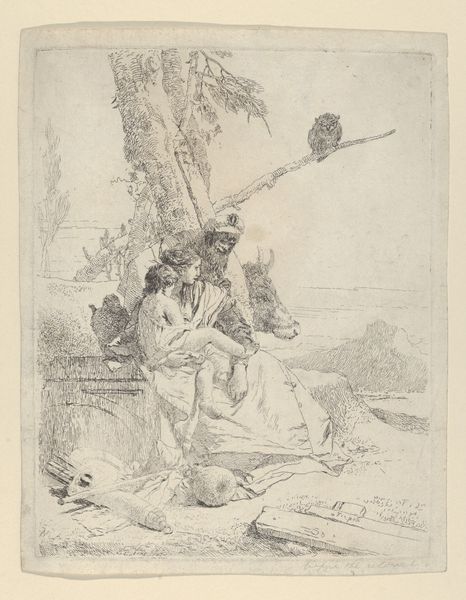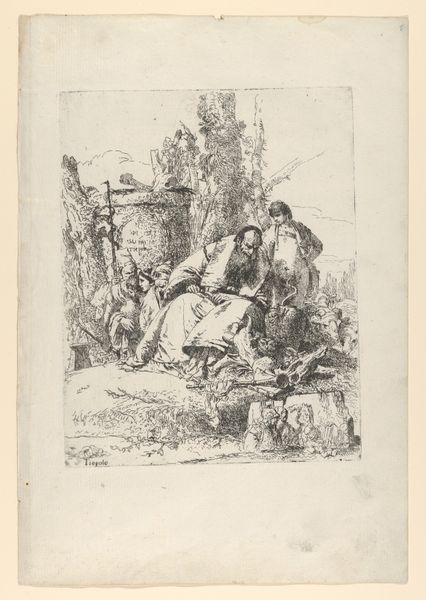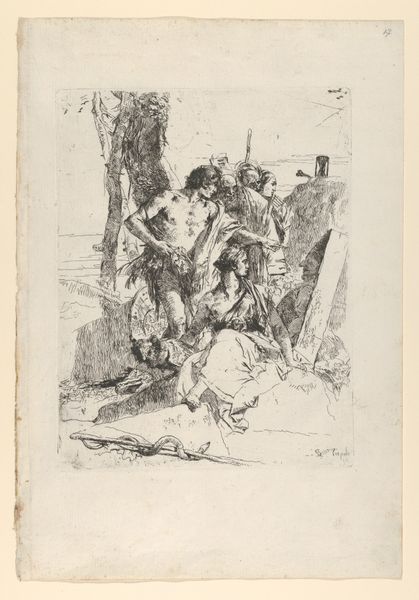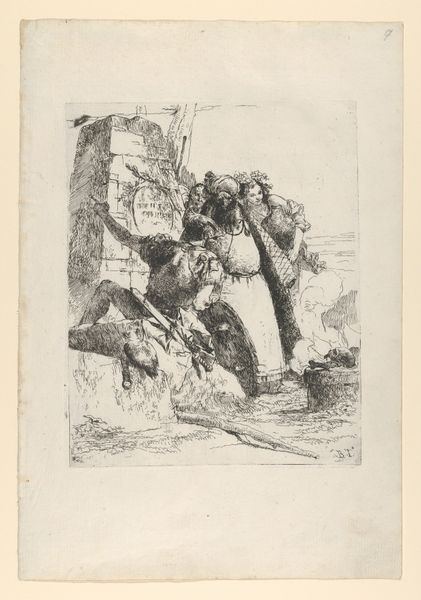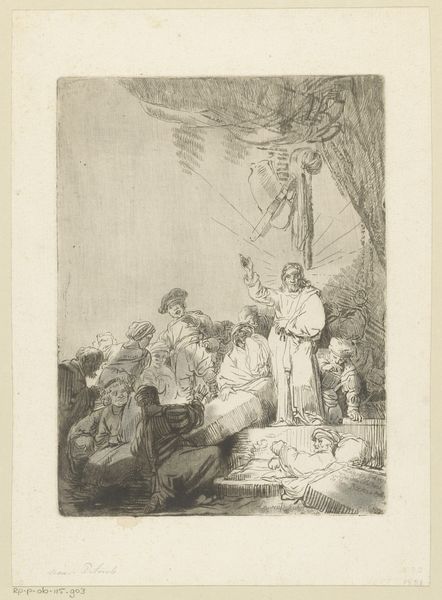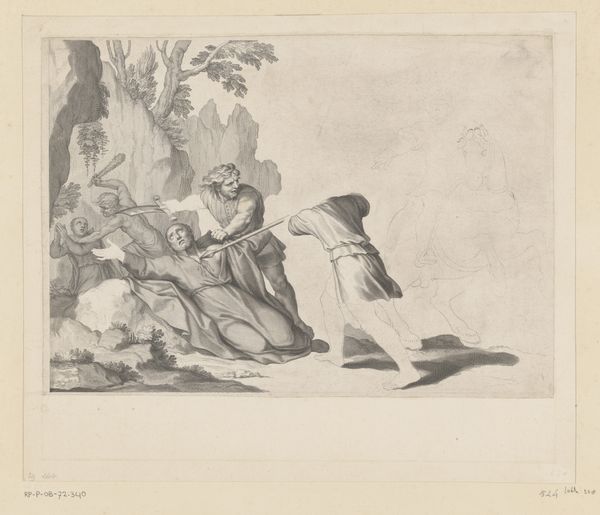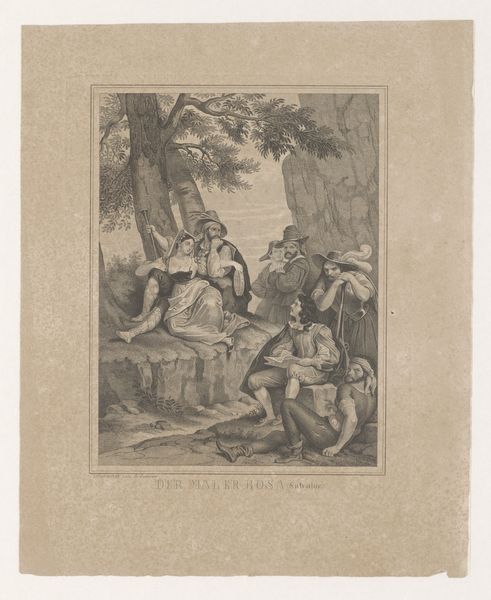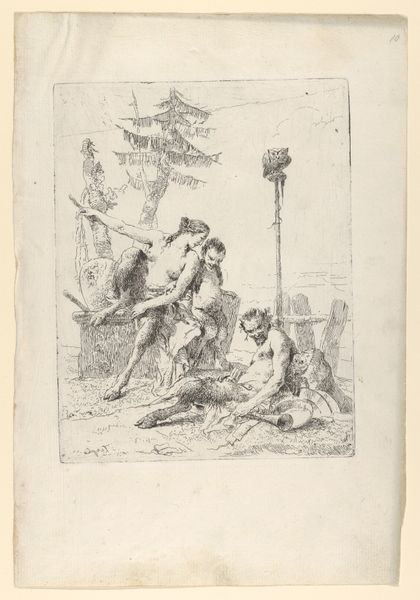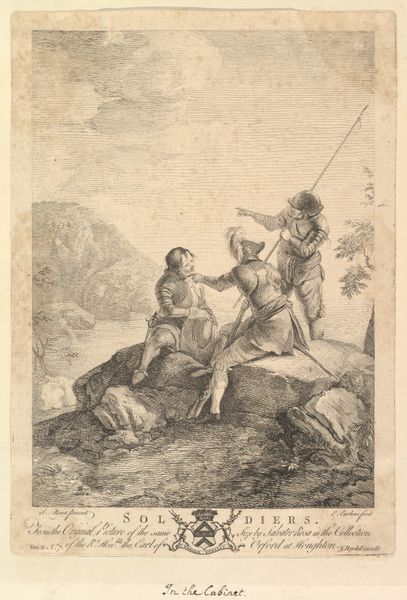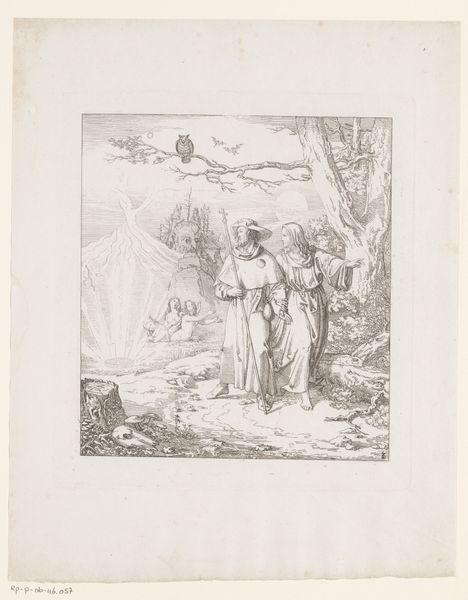
The Family of the oriental Peasant, from the Scherzi 1725 - 1780
0:00
0:00
drawing, print, etching
#
drawing
#
narrative-art
# print
#
etching
#
landscape
#
figuration
#
genre-painting
#
italian-renaissance
Dimensions: Plate: 8 3/4 x 6 7/8 in. (22.2 x 17.5 cm) Sheet: 13 7/16 x 9 3/16 in. (34.1 x 23.3 cm)
Copyright: Public Domain
Curator: This etching before us, "The Family of the Oriental Peasant, from the Scherzi," was created by Giovanni Battista Tiepolo sometime between 1725 and 1780. What strikes you immediately about this image? Editor: Well, beyond the superb draftsmanship, there’s a melancholy quality despite the intimate family grouping. The muted tones of the etching amplify a feeling of hardship, perhaps. What symbols draw your eye? Curator: The owl, perched on a branch above the family, certainly calls for closer examination. Owls traditionally symbolize wisdom, but also death. It creates an ambiguity - is this family under the wise watch of nature, or is their existence threatened? This speaks to the deeper narrative being evoked here. Editor: Yes, the socio-political undercurrent is quite noticeable. Look at the family: a father, mother, and child— seemingly displaced against a wide, almost barren landscape. The seemingly classical ruins in the foreground remind us that history has passed these people by. Does the family represent the changing dynamics within the orientalist discourse of the time, viewed through a European lens? Curator: Tiepolo, of course, belonged to the Italian Renaissance tradition. But "oriental" itself is such a loaded term! He might have employed such iconography to conjure associations with Biblical stories, with ideas of wandering, displacement and search for the sacred within the family unit. What about the cow in the composition? Does this hold further cultural resonance in that epoch? Editor: Ah, the inclusion of a cow! Possibly alluding to rural or peasant life, an understanding heavily shaped by wealthy, often urban patrons commissioning these images. The cow signifies prosperity, sure, but there’s also a long-standing history of pastoral imagery romanticizing the lives of rural populations—a dangerous romanticization, considering the historical and material hardships those populations faced. Curator: A critique embedded in beauty, then, or perhaps, beauty used as a veil? Food for thought. Thank you for casting light on this wonderful image. Editor: The pleasure was all mine. These layered readings reveal how charged and complex simple pastoral scenes truly can be.
Comments
No comments
Be the first to comment and join the conversation on the ultimate creative platform.
